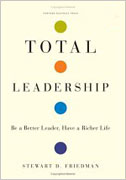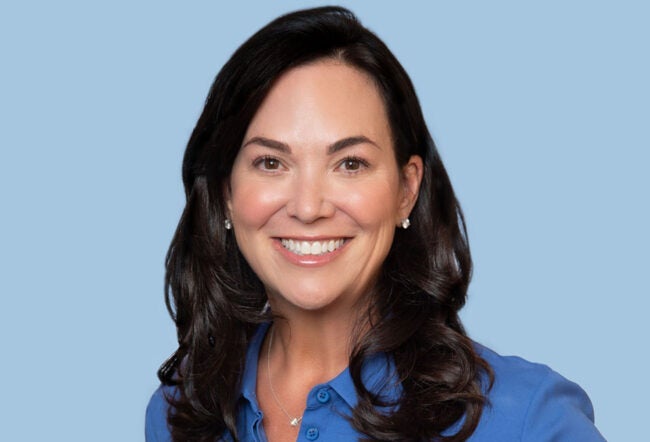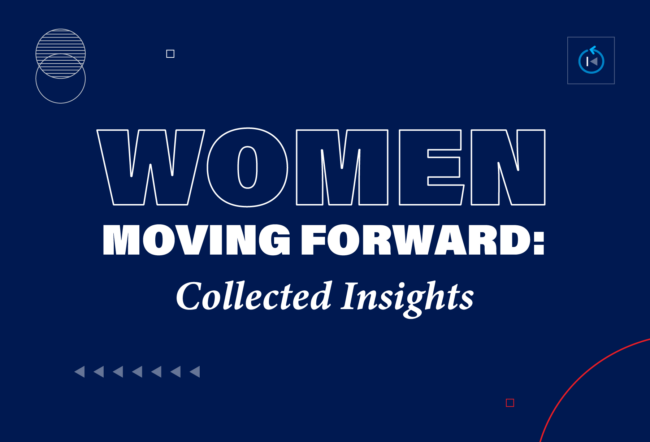While people in the business community hear a lot about the importance of work/life balance, it’s often unclear exactly what that phrase means or how one achieves it. Stewart Friedman, founding director of Wharton’s Leadership Program and the Work/Life Integration Project, thinks he has an answer. In his new book, titled Total Leadership: Be a Better Leader, Have a Richer Life, Friedman describes the four domains of people’s lives — work, home, community and self — and what individuals can do to integrate these domains and improve their leadership skills at any stage in their careers. He talked with Knowledge at Wharton about the ideas and research that went into this book. An edited version of the conversation follows.
Knowledge at Wharton: To start out, can you give us a brief description of the theme of Total Leadership?
Friedman: The basic idea is that you can integrate the different parts of your life in ways that you probably didn’t think about before you went through the steps that I take you through in this book, which is my Wharton course brought to life in the form of a book.
The big idea is that it’s possible to create value for the different parts — for work, home, community and your private self, the domain of mind, body and spirit — in ways that you probably didn’t think about before. It doesn’t have to be a trade-off. Most people operate in a world of thinking about sacrifice as a necessity, that you have to give up something in one part of your life in order to achieve success in another part. That’s probably always going to be true to some extent.
What I’ve discovered in developing this course, refining it over time and doing research on its impact, is that those trade-offs are not as necessary as we often think. And what it takes to get past that trade-off/balance mentality is leadership. So the book takes you through the process of developing the leadership capacity you need to integrate the different parts of your life to perform better in all of them.
Knowledge at Wharton: Do you have a sense of how many people aren’t satisfied with their lives the way they are run now? Is there a need for this new look at how to integrate these four aspects of your life?
Friedman: I think the aspiration to live a full and meaningful life, and to be successful in life, has been around since the dawn of time. What’s interesting in what I’ve observed over the last two decades … is that certain things have changed that make this a more pressing issue today than it was say, 20 years ago.
Knowledge at Wharton: Like what?
Friedman: The digital revolution is certainly one. The 24x7x365 opportunity to be engaged in work-related activity has made life a lot more stressful for many people. And the way you create and maintain useful, meaningful boundaries between the different parts of your life, the different roles that you play, has become a really pressing issue because most of us grew up without the technologies that now are ubiquitous.
The psychological and social skills required to use these tools are ones that we never learned as kids. So we are having to develop these skills in order to keep up with the technological advances that have promised liberation, but that for too many people have resulted in slavery. How you break out of that is a part of what we have to learn.
Knowledge at Wharton: What about the fact that companies are so global these days, and so much time is taken up just in travel, which can be, not just time consuming, but exhausting?
Friedman: One of the ways in which people experiment to better integrate the different parts of their lives to perform better in all of them is to reduce travel and use new technology to better manage the demands of their time and location.
So while for many people living in a global economic marketplace causes greater strain because of the assumption that you must be in many different places on earth to get work done, the good news about the digital revolution is that maybe you don’t actually have to be there to get done most of what you need to get done.
I think it cuts both ways. A part of the opportunity here and the learning that’s required is that we use these communication tools available to us now more intelligently. That requires some experimentation — and learning how to use them in a way that works for you and for the important people in your life, including those people at work and in your family.
Knowledge at Wharton: There have been a lot of articles, speeches and probably even books on work/life balance, including the need to be involved not just in work and in your family life, but in the community and in personal projects that give you a lot of satisfaction. How is this book different from everything that’s out there?
Friedman: There’s a lot of talk about work/life balance for some of the reasons we just described. People are feeling stress; they’re not able to devote the time and attention they need to the things that matter most to them.
There’s a couple of ways in which I think this approach is different. First, it starts with the notion that you can find ways of creating value, improving performance in all four domains — what I call a four-way win: work, home, community and self — by making intelligent choices about how you use your time and attention that don’t necessarily require a trade-off.
With most of the work/life balance approaches, the conversation that is current comes from the point of view of the employee making demands on his or her employer for more freedom and more available time to do things outside of work. And that’s the wrong approach.
What leaders do when they try to create change, when they aim to make sustainable change that lasts, is enlist the people around them in whatever it is they’re trying to get done that’s new by having those people see the benefits for them.
So in the total leadership approach, what you do is first spend some time on what I call “being real.” What’s most important to you? You write about that. You think about your core values, your vision of the kind of leader you want to become, the world you want to create and the legacy you want to leave. Talk about that with others to get clearer about what really matters to you.
The second piece is what I call “being whole.” There you identify the performance expectations of the most important people in your life at work, at home and in the community. You list the most four or five most important people or groups. What do they expect of you? What do you expect of them?
Then you talk to those people. You prepare for, and engage in, what I call “stakeholder dialogs.” Imagine having these conversations over a concentrated period of time with the most important people. This is the peak anxiety point in this process because everyone is like, “Do I really have to talk to these people about this stuff?”
In nine out of 10 occasions, what happens is that people come through that process with really new insights about how all the pieces fit together and what other people actually expect of them, because most business professionals probably have the following problem: What they believe others expect of them is actually greater than what those people really expect of them. You discover that gap when you have a good conversation.
What’s the implication of that, of getting a clearer and realistic picture of what other people expect of you? And if it’s true — and believe me, it is true — that people expect less of you than you think, you can then reallocate your time and attention more intelligently. That’s what people do in the experiments, which is the third phase, the “innovative,” where people take on small steps intended to produce a four-way win.
Now, to finally answer your question about what’s different here in the leadership piece: When you engage in these stakeholder dialogs, you find out a lot more about what other people are interested in, what their real interests are in terms of what they need from you and what you need from them.
On the basis of knowing more about what’s really important to you and what’s really important to them, you can then design smart experiments that really do satisfy their interests. That makes it much more likely that when you create an experiment to produce value for them and for you, that it actually does. And it’s entirely customized to you.
The last point I’ll make about the work/life balance movement and its failure is the problem of “one size fits all”-ism, which is a not uncommon problem in many HR areas where, for the sake of equality, there’s a standard policy that is implemented in a way that’s universally applicable — [even though] everyone’s life is different and everyone needs different things in terms of how to integrate the different pieces. It’s got to be customized.
So this approach is built on your assessment of what matters, who the most important people are in your life and the experiments that fit your situation.
Knowledge at Wharton: This process clearly can’t be done in a vacuum. There’s a lot of interaction with others, getting feedback, giving feedback, etc. Correct?
Friedman: Yes. It’s leadership.
Knowledge at Wharton: What’s in this for the business community in terms of increased productivity or increased profitability?
Friedman: It’s all about improved performance in all domains. We have done research on hundreds of people going through this process to look at the impact in terms of individual performance at work, at home and in the community, as well as [the impact on] spiritual development, and emotional and physical health.
What we find is that satisfaction in all four domains improves, particularly in the self domain, and I can explain more about why that is. But, at the same time, performance goes up, not as much as satisfaction goes up, but performance also goes up in all four areas.
This comes as a result of people doing these experiments and devoting a little bit less time, in terms of hours per week, to their work. Let me repeat that. People are spending less time working, but they’re performing better and they’re more satisfied across the board. Now, why is that? Again, it’s because they’re using their time and attention more intelligently. They’re doing more of the things that matter to them and to the people around them.
So, the results are positive from a business point of view. You get better energy, better focus and greater productivity.
We have some other numbers to report: financial outcomes, cost savings and productivity improvements, as well.
Knowledge at Wharton: How important is it, or is it important, to have mentors or heroes in your life in this process? Do you have people whom you recommend? Do you suggest that people can perform better if they identify people they admire and would like to be like? Or is that not part of this process?
Friedman: It is. One of the first exercises that I ask people to do in the “be real” section, the opening, is [figure out] what’s important. There are a lot of different ways of getting at that issue of what you really care about. One of the most effective ways is to write about somebody you admire and say what it is you admire about them.
Many people write about family members, but some will choose historical figures or just friends. It’s a useful foil for just contemplating your own values. But you also identify the issue of mentorship.
On my way over here, I was reading an email on my Blackberry from somebody who had gone to a workshop that I did at the U.S. Olympic Committee at Olympic University back in the fall. She wrote to me and said, “As a result of doing your exercise, I identified mentors in each different domain. I’d never actually done that before and I just wanted to tell you — this is now five or six months later — that it changed my life.”
To think about and to cultivate important relationships in each domain was really important to this person, and it is for many. It becomes an important point of focus in their work in this program.
Knowledge at Wharton: What are some of the tools in the book that you offer to apply these leadership principles and lessons?
Friedman: Some of the exercises that I’ve described here are part of the toolkit. The most critical that people report to me are the longest lasting skills that they both learn and continue to apply over time. I do stay in touch with alumni and many of them come back to class to serve as guest speakers or as alumni coaches for participants as they go through the program.
The biggest one is that people learn how to innovate in ways that make sense for their whole lives. This whole process really is one of being a smart experimenter, an intelligent innovator.
Some of these experiments fail. You design an experiment — let’s say it’s to exercise four times a week — and it turns out that you just can’t get it done, for whatever reason. You collect data about what worked and what didn’t and what the impact was of what you did.
But typically, when I have people do experiments, there are three that I ask students or program participants to do. Usually, one works really well, one is pretty good and one kind of blows up, and all of them carry lessons in them. Why was this a better experiment than the other one?
People tell me months and years later that they became better at implementing change, about driving change. That’s the key skill because they’re designing experiments that are well-conceived and well-crafted. They’re also encouraged, again, to align their interests with the people around them. So they’re more effective in leading change, which is, of course, the most important thing that leaders do — create change.
Knowledge at Wharton: What’s the main reason that people give for not wanting to undertake this process, because it is, as you’ve described it, time consuming and a little risky. You have to involve other people who may or may not be as interested in doing this as you are.
Friedman: Right.
Knowledge at Wharton: So, what’s the pushback you get from people who say, “It’s not for me”?
Friedman: Well, it isn’t for everyone. And there are shorter versions of it. I’ll be doing a talk at a company tomorrow where it will be 300 people in an hour and a half. It’s very different than a four-month enterprise of meeting regularly and doing all this work outside the sessions.
The big pushback is that some people just don’t want to look inside and spend the time thinking about what really matters to them and how they’re actually living. Either they’re just not ready because they’re not mature enough, or they haven’t thought about it enough.
Knowledge at Wharton: What’s the main take away that you want people to get from your book?
Friedman: The main idea — and the reason I’m so enthusiastic about what I’ve observed as a result of people undertaking this enterprise, this practice if you will –is a greater sense of control and freedom living in ways that are consistent with what you’re passionate about, what you really care about.
I find that when people do that, when they take even a small step that’s under their control, that’s intentional and that’s in a direction that they choose, they feel better about their lives and about the people they’re affecting with their actions on a daily basis. That’s just very gratifying to see.
The reason I’m excited about it is that it’s possible for just about anybody to do that if they are willing to make the small investment that’s required.
Knowledge at Wharton: Great. Thanks, Stu. It’s been very interesting.
Friedman: Thank you, Robbie.



